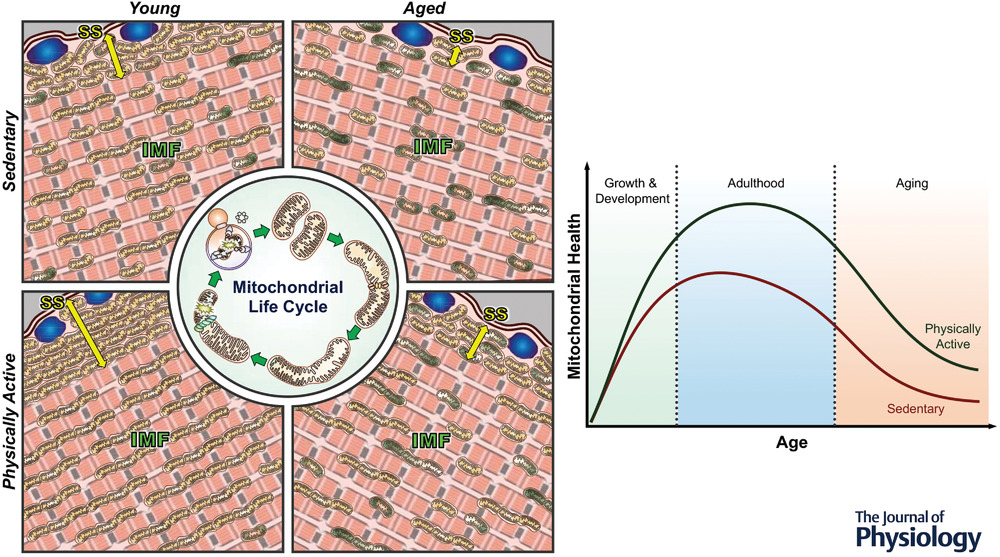Exercise and mitochondrial health
Jonathan M. Memme J Physiol 09 December 2019
The mitochondrial life cycle is regulated by the finely tuned balance of biogenesis and fusion, opposed to fission and mitophagy. At any moment these processes are in a state of flux and are induced and/or suppressed depending on the status of the cell and the physiological conditions it is subjected to. A hallmark feature of aged muscle is the reduction of both subsarcolemmal (SS) and intermyofibrillar (IMF) mitochondrial fractions, determined by a thinner SS mitochondria layer (yellow arrow) and fragmented IMF pool, as compared to their younger counterparts.
Additionally, aged muscle presents an accumulation of damaged mitochondria (green organelles). Physical activity is a well‐established inducer of mitochondrial remodelling that promotes increases in both SS layer thickness as well as IMF interconnectivity. Additionally, aged muscle is capable of adapting to the exercise stimulus which improves mitochondrial content and quality. Indications of a mitochondrial contribution to sarcopenia suggest that, with regular exercise, mitochondrial health can be preserved well into old age and contribute to whole body vitality.














